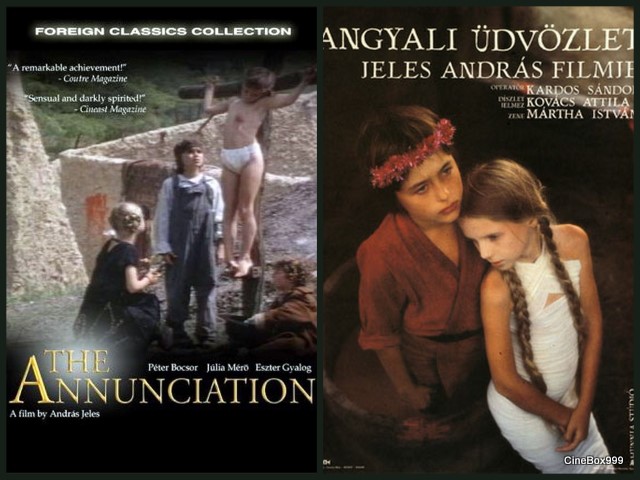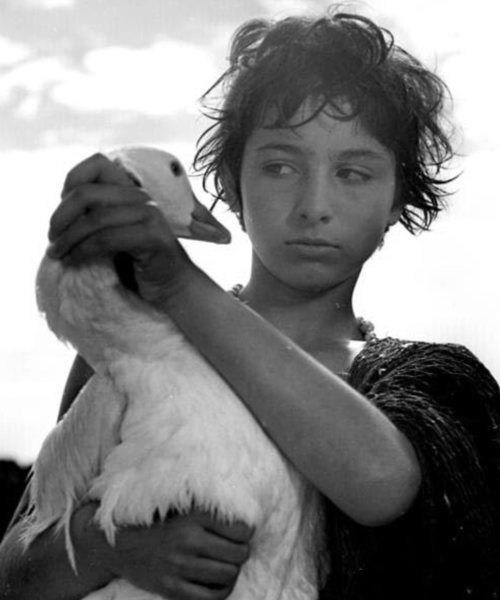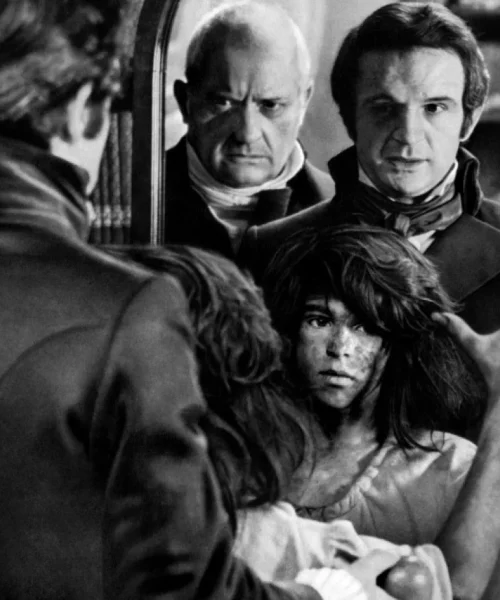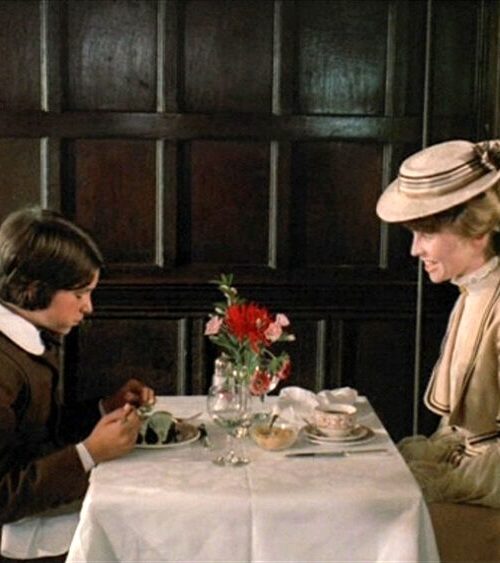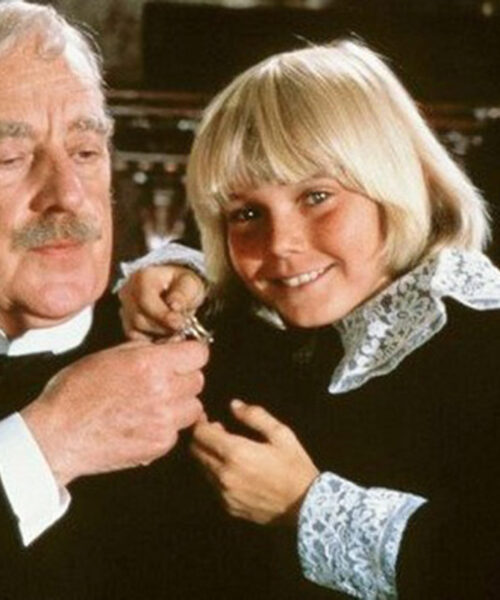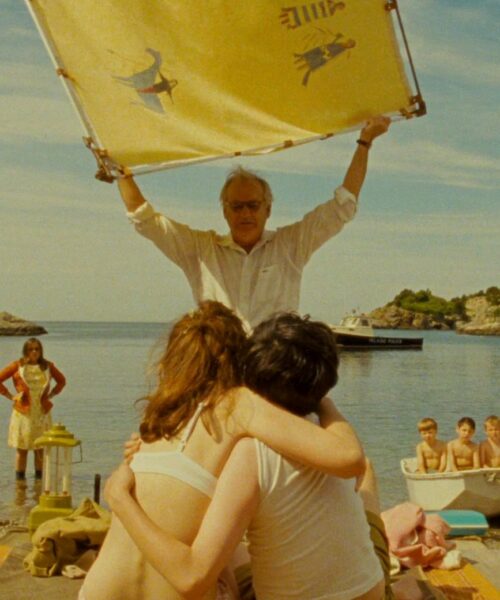“Angyali üdvözlet“, known to English-speaking audiences as “The Annunciation“, is a masterpiece of Hungarian cinema that surprises, intrigues, and fascinates. Directed by András Jeles and inspired by Imre Madách’s play “The Tragedy of Man”, the film is a journey through the very essence of humanity, with children in the roles of the protagonists.
Aesthetically, “Angyali üdvözlet” is a dreamlike vision. Its ethereal and dreamy cinematography creates a world that seems suspended between heaven and earth. The settings vary, ranging from the lush gardens of Eden to post-apocalyptic landscapes, with each scene being a moving painting.
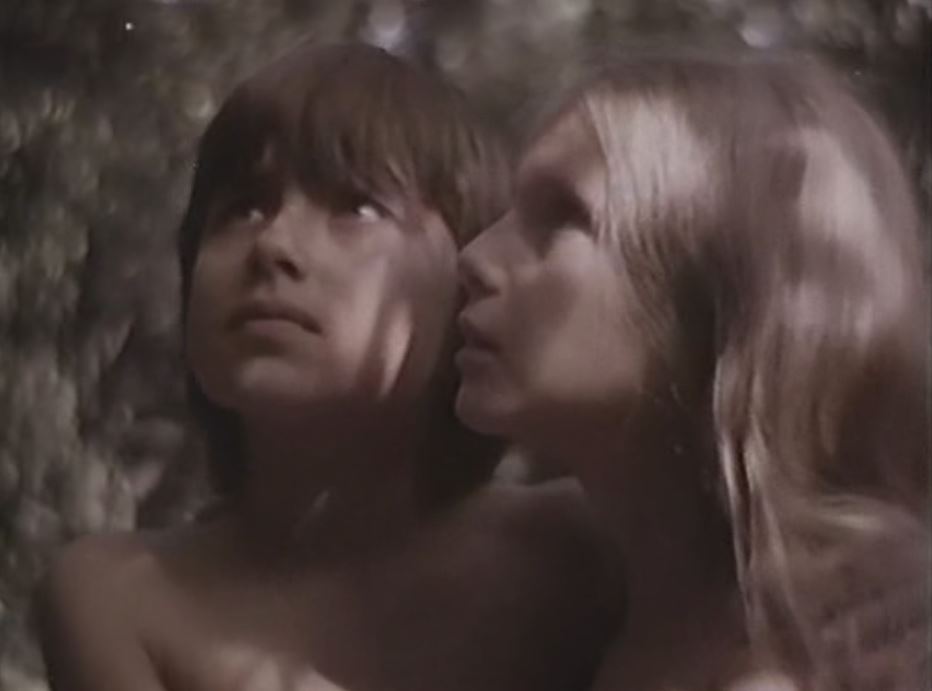
The bold and innovative choice of using young actors to represent biblical figures like Adam and Eve not only emphasizes the characters’ innocence but also highlights the vulnerability of humans in their relentless quest for meaning. The film’s sensuality is not anchored to traditional conventions but is manifested in pure innocence and a sincere desire for knowledge and understanding.
The dialogue between Adam and Eve, though performed by children, has an intensity and depth that belies their young age. Through their eyes, we witness the joys and tragedies of human experience, from original sin to historical and cultural evolution.
It is evident that “Angyali üdvözlet” is not just a film, but an experience. András Jeles, through a masterful fusion of aesthetics and narrative, invites us to reflect on the nature of existence, the eternal conflict between good and evil, and the intrinsic sensuality of being human. It’s a film that, through its singularity, reminds us how complex and fascinating the journey of life is.
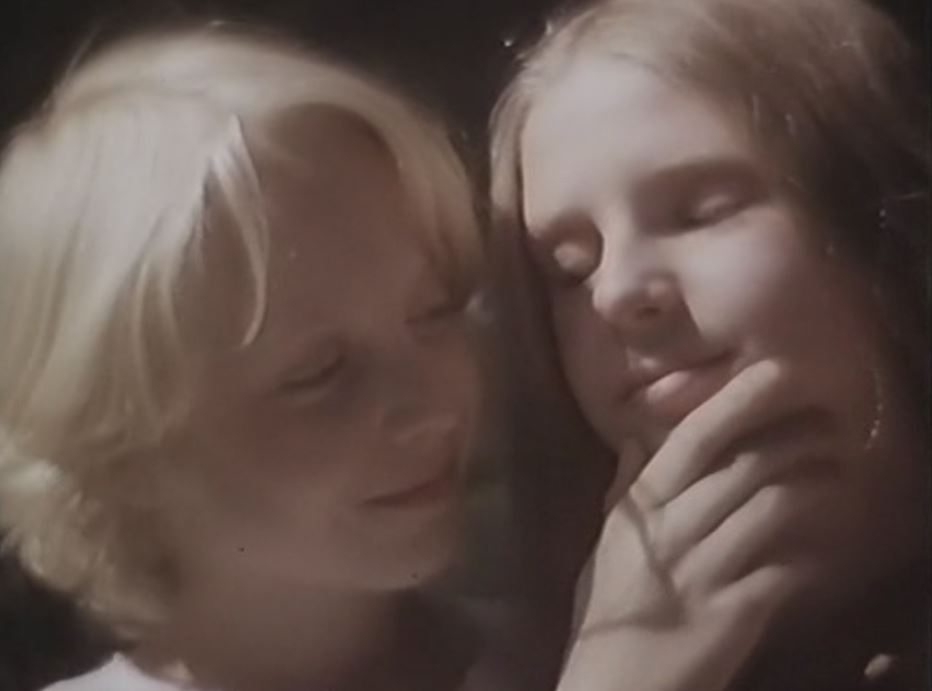
The Dreamlike Journey of Adam and Eve Through the Ages: The Plot of "Angyali üdvözlet"
The film “Angyali üdvözlet” opens in a lush Eden, where two childlike figures, Adam and Eve, appear in an as yet untainted world. But, as in every Genesis narrative, innocence is ephemeral. Temptation arrives in the form of a forbidden fruit, and with a simple bite, the history of humanity is catapulted into a vortex of events.
We follow Adam and Eve on a journey through various historical epochs, from ancient civilizations like Egypt and Greece, through the Middle Ages, to modern and even post-apocalyptic times. In each era, the couple represents the archetype of humanity, facing challenges, conflicts, and moral dilemmas. Their adventures are, in fact, an allegorical representation of the universal struggles between good and evil, love and hate, war and peace.
But “Angyali üdvözlet” is not just a historical chronicle. It is, rather, a philosophical meditation on existence. Each epoch reflects humanity’s aspirations, fears, and desires, with Adam and Eve constantly seeking their place in the grand design of the universe.
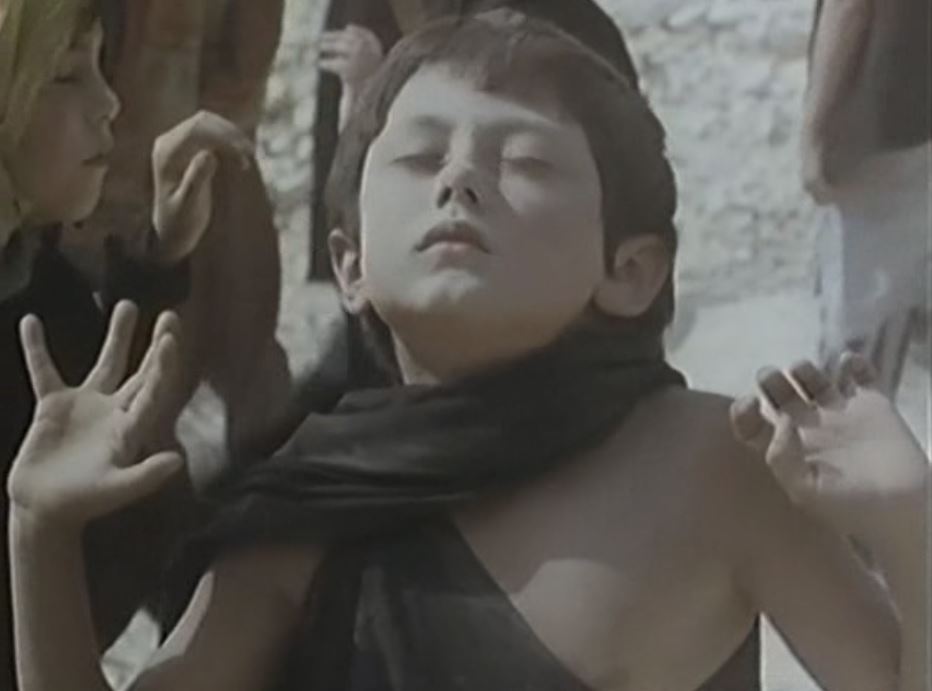
Throughout the film, we witness the inner growth of Adam and Eve. From innocent creatures of Eden, they become representatives of human complexity, grappling with issues of faith, destiny, and free will. Their interaction, while retaining a childlike innocence, is permeated with existential questions, making the film a profound reflection on the nature of humanity itself.
The climax of the film sees the couple in a desolate world, symbolizing the possible future of humanity if it fails to recognize and confront its inner demons. However, even amidst desolation, there’s a spark of hope, suggesting that redemption and rebirth are always possible.
With “Angyali üdvözlet”, András Jeles offers a unique and poetic interpretation of human history, where the past, present, and future intertwine in a dreamlike tapestry, reminding us of the beauty and tragic complexity of the human condition.
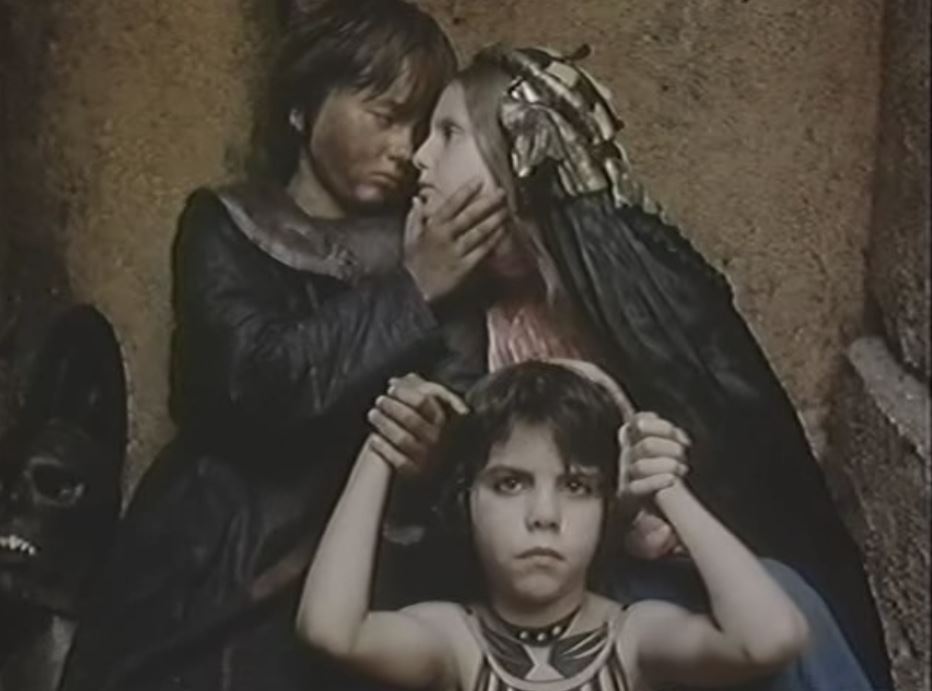
Nudity in "Angyali üdvözlet": Innocence, Vulnerability, and Human Representation
Artistic nudity, present for centuries in the visual arts, is often used to express a range of emotions and meanings, from pure aesthetics to deep allegory. In András Jeles’ film “Angyali üdvözlet”, nudity takes on a particular significance, further emphasized by the choice of using young actors for the roles of Adam and Eve.
Innocence and Purity: Initially, in the lush Eden, the nudity of the young protagonists reflects the innocence and purity of humans before the original sin. In this context, the absence of clothes has no sexual or provocative connotations. It’s rather a representation of human nature in its purest and undisturbed form.
Vulnerability and Exposure: With the fall from paradise and the journey through the ages, nudity becomes a manifestation of human vulnerability. Adam and Eve, while maintaining their childlike form, confront the harsh realities of the world. In this scenario, their nudity symbolizes the fragility of the human being, always exposed to external and internal forces seeking to define or corrupt it.
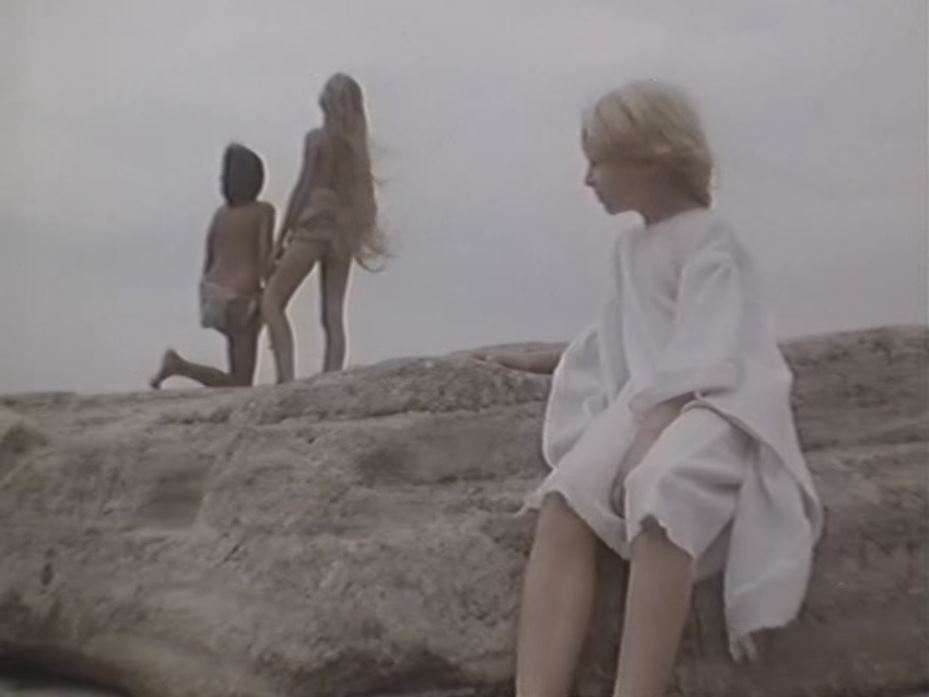
Universality of the Human Condition: Nudity, especially when portrayed in a non-sexual context, can also act as a leveler, highlighting the common human condition. Without clothes or adornments, Adam and Eve become universal archetypes, representatives of every man and woman through the ages. This powerful symbolism emphasizes the film’s message about humanity’s constant struggle between good and evil.
Contrast between Innocence and the World: As the film progresses, the contrast between the protagonists’ innocent nudity and the increasingly complex and corrupt environments they find themselves in serves as a powerful visual tool. This contrast accentuates the tension between humanity’s original innocence and the challenges imposed by history and culture.
Thus, the use of nudity in “Angyali üdvözlet” is not random or purely aesthetic. It serves as a powerful vehicle to explore deep themes such as innocence, vulnerability, and the essential nature of humanity. András Jeles, through this artistic choice, invites the viewer to reflect on the essence of being human and the forces that shape our history and destiny.
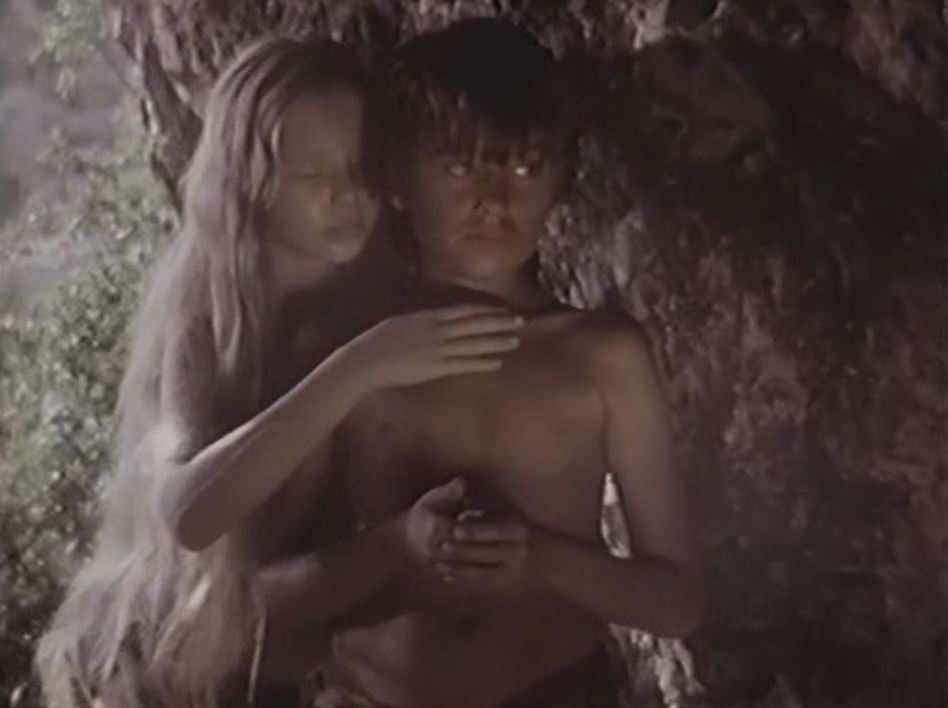
The Aesthetic Beauty of the Protagonists in "Angyali üdvözlet": An Angelic Vision of Human Nature
Beauty, as subjective as it is universal, plays a central role in the visual narrative of “Angyali üdvözlet”. András Jeles’ decision to depict Adam and Eve as young, angelic figures is not just a narrative vehicle, but also a powerful aesthetic tool.
Angelic Beauty: With delicate features and an aura of innocence, the protagonists exude an ethereal beauty. This “heavenly” quality serves as a visual metaphor for humanity in its original, uncorrupted, and pure form. This representation echoes religious iconography, where angels are often depicted as figures of pure beauty and light.
Beauty as Counterpoint: As the film progresses through the ages, the unchanging beauty of the protagonists becomes a sharp contrast to the cultural, historical, and environmental changes. Their static beauty underscores the message that, despite challenges and temptations, the essence of humanity remains constant.
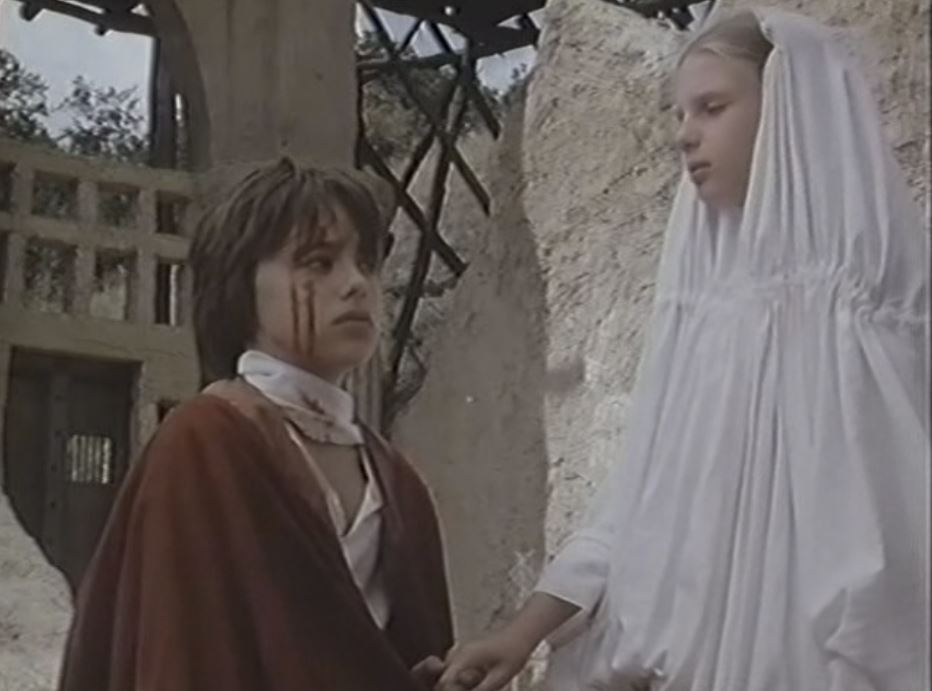
Simplicity and Nature: The beauty of Adam and Eve is not artificial or constructed. There are no ornaments, makeup, or artifices. It’s a natural, essential, and timeless beauty. This reinforces the characters’ connection with nature and the universe, suggesting an intrinsic harmony between humans and the natural world.
Light and Shadow: The film’s photography plays a crucial role in emphasizing the beauty of the protagonists. The use of soft lighting, contrasts between shadow and light, and pastel colors give the protagonists an almost divine aura, elevating their aesthetic presence above the earthly context they navigate.
Therefore, the aesthetic beauty of the protagonists in “Angyali üdvözlet” is not just a visual pleasure for the viewer, but a key component of the narrative. Through their angelic beauty, Jeles explores deep themes concerning the essence of humanity, the relationship between man and the universe, and the tension between original purity and the corrupting forces of the world. Their beauty becomes, in this context, a visual representation of hope, resilience, and the eternity of the human soul.
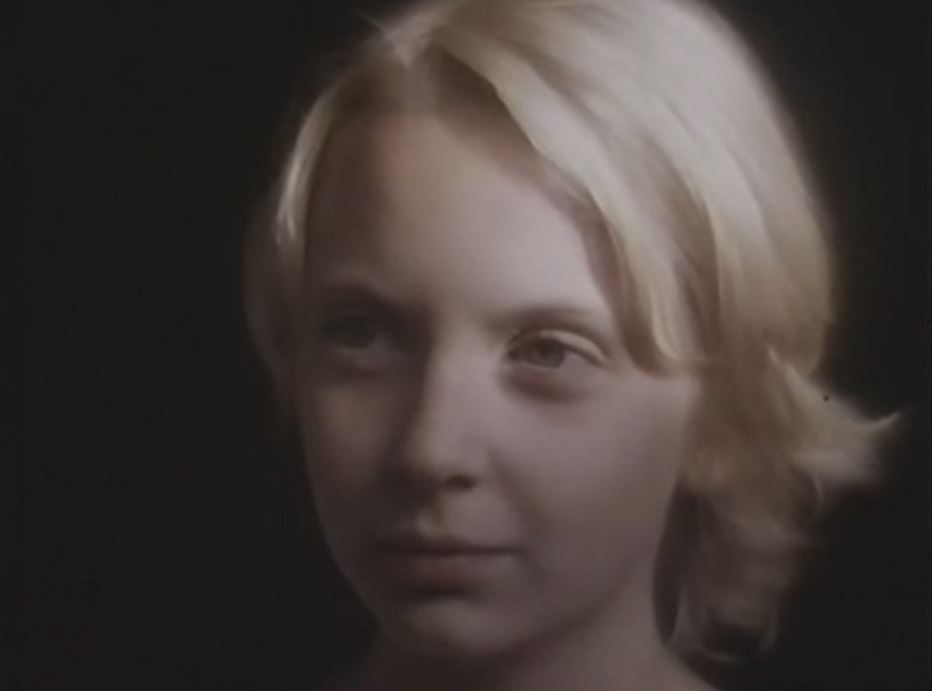
András Jeles' Lingering: Ambiguity and Introspection in "Angyali üdvözlet"
Cinema is an expressive medium that navigates between what is shown and what is concealed. In “Angyali üdvözlet”, András Jeles employs an evocative visual expression: prolonged shots on the protagonists. This choice, beyond mere aesthetics, becomes a tool to probe ambiguity and the deep nuances of the story.
A Moment of Contemplation: Lingering on characters offers the viewer a pause to observe, reflect, and seek underlying meanings. This extended shot is an invitation to penetrate the emotional layers of the characters and situations.
Narrative Ambiguity: Jeles manipulates the expectations of the viewer. The lingering can imply different interpretations: is it a pause charged with tension, a moment of introspection, or a temporary reflection? This ambiguity becomes a tool to invoke a critical and analytical view of the film.
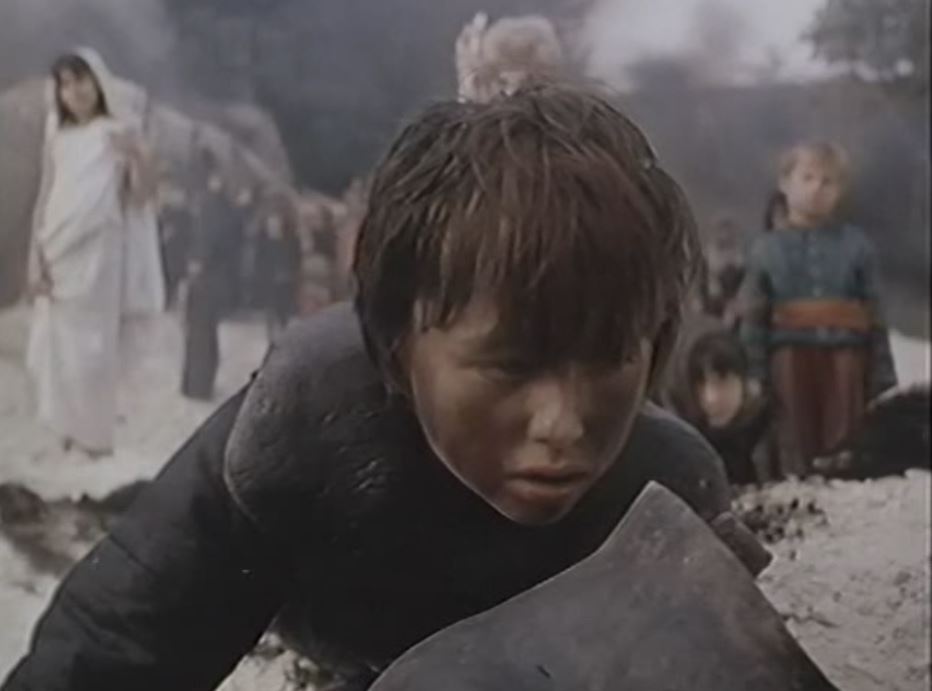
Beauty and Discomfort: Through the prolonged shot, Jeles creates a play of contrasts. The aesthetic beauty of the protagonists confronts the possibility of deeper and more complex truths hidden behind the apparent simplicity of the image.
Time and Space for Empathy: This technique also provides an opportunity for emotional connection. The lingering offers a more intimate look, allowing the viewer to immerse themselves in the inner conflicts of the protagonists.
A Mirror of Humanity: These moments of prolonged focus transform the film into a mirror. The viewer sees their own humanity reflected, suggesting that, like the characters on the screen, we too have hidden facets behind appearances.
Therefore, Jeles’s lingering is not merely a stylistic choice, but a powerful means to unveil and explore the ambiguity of the human condition. Through these prolonged shots, “Angyali üdvözlet” invites a deep meditation on the essence of being, the highs and lows of life, and the infinite nuances that define humanity.
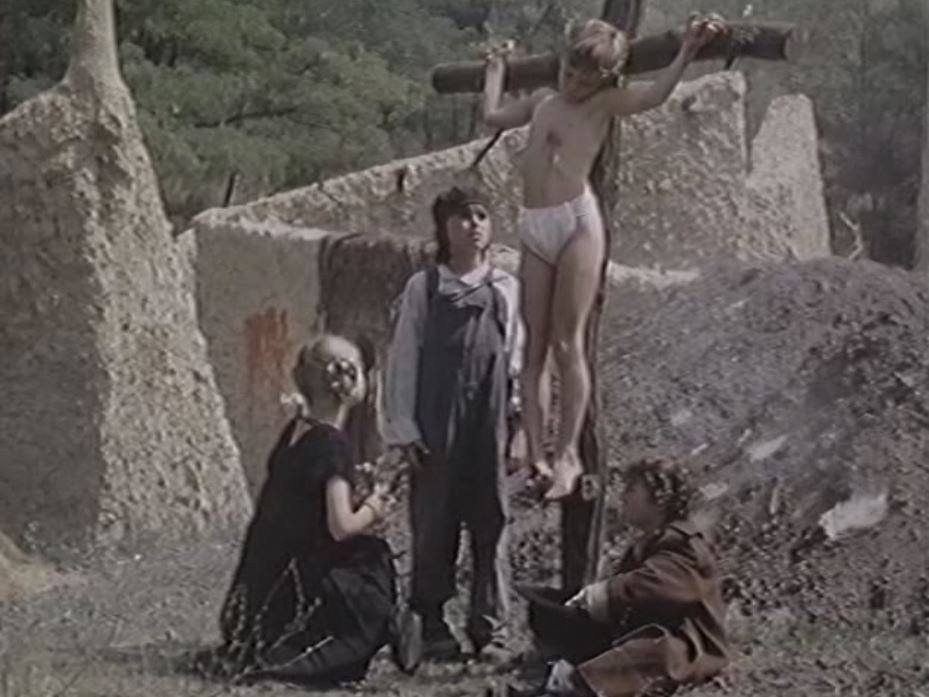
Lucifer in "Angyali üdvözlet": The Ambiguous Beauty of Temptation
In the vast landscape of cinema, the devil or Lucifer is often depicted as a menacing or deformed figure, an emblem of evil and corruption. However, in “Angyali üdvözlet,” András Jeles challenges this convention, presenting Lucifer as a youth of extraordinary beauty, similar to Adam and Eve in his angelic appearance.
One of the most fascinating aspects of Lucifer’s representation in the film is the directorial choice to use a prolonged shot. This choice amplifies the character’s presence and his narrative importance, making his influence on the unfolding events impactful.
The Seductive Beauty: The depiction of Lucifer as a beautiful boy emphasizes the seductive nature of evil. In this context, beauty becomes a means through which temptation manifests, reminding the viewer that the most dangerous temptations can appear in the most attractive guises.
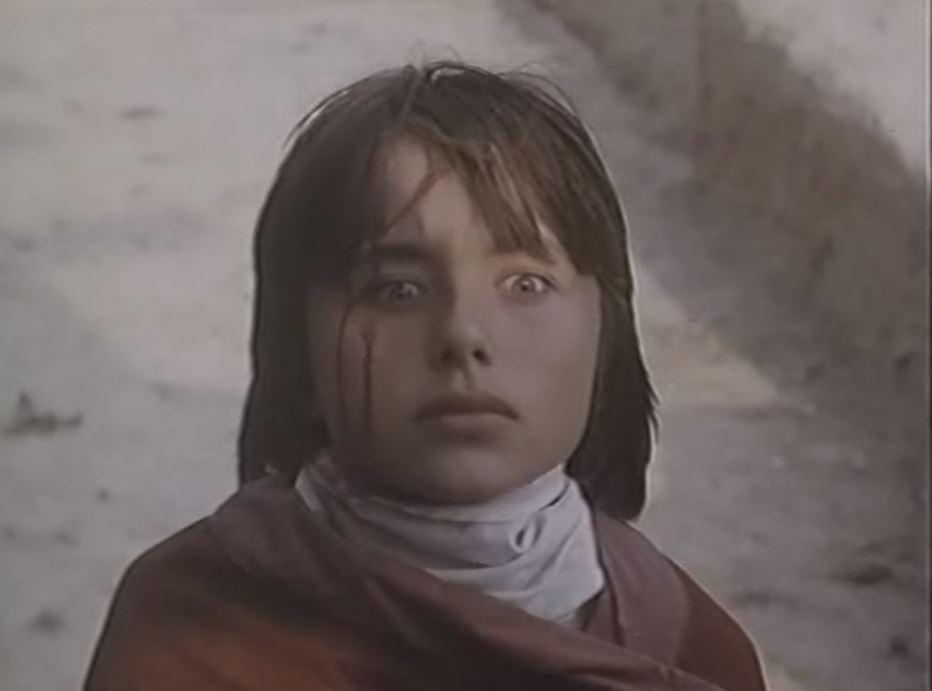
Lucifer’s Duality: Religious tradition often describes Lucifer as a fallen angel, a being who, despite his rebellion, had divine origins. Representing him with ethereal beauty, Jeles touches on this inherent duality of the character: a divine creature who chose a dark path.
Prolonged Shot: The director’s choice to focus on Lucifer for an extended period in the final part of the film could serve several purposes. It may invite the viewer to reflect on the ambiguous nature of temptation and the fact that evil is not always easily recognizable. Moreover, it places Lucifer at the center of the narrative, suggesting that his presence and influence are central to the story of humanity.
Mirror of Humanity: Lucifer’s beauty might also represent the innate qualities of humanity that, if misdirected, can lead to downfall. Like Adam and Eve, Lucifer is an image of the human being, but he represents the dark side of human nature: pride, rebellion, and the desire for power.
In “Angyali üdvözlet,” Jeles uses beauty not only as an aesthetic means but also as a powerful narrative tool. Lucifer’s beauty, alongside that of Adam and Eve, serves to underline the complexities and ambiguities of human nature, inviting the viewer to a deep reflection on good, evil, and everything in between.
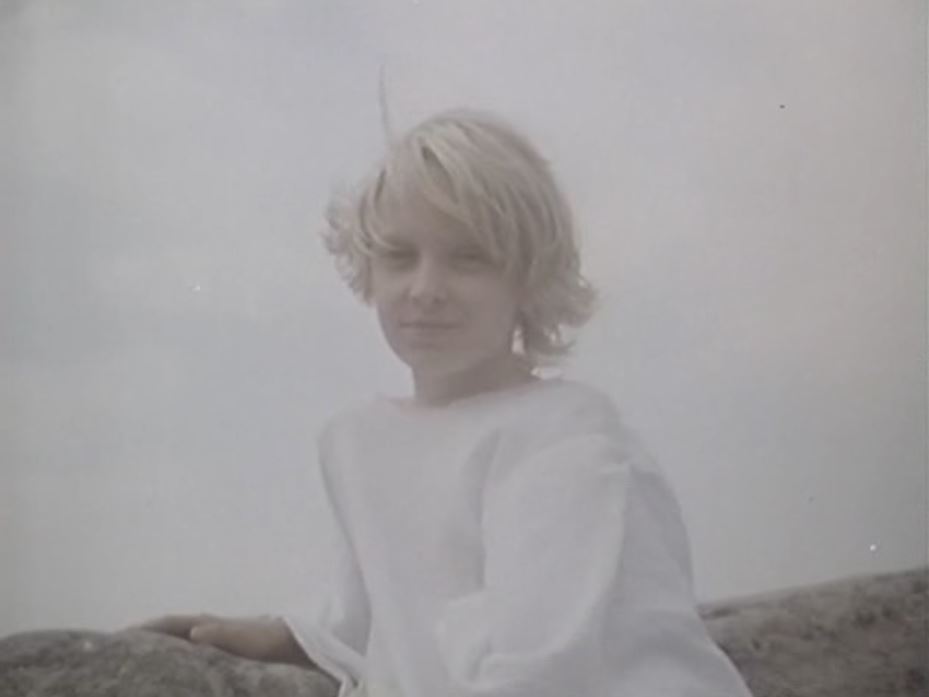
In addition to these aspects, further reflections emerge from the analysis of Lucifer’s representation in the film. It might suggest that, despite the passage of time and the progression of human history, the temptation and duality of Lucifer remain constant, always lurking and ready to challenge humanity.
Reflection on Humanity: The portrayal of Lucifer as a fascinating figure might also reflect the complexity of human nature itself. Many of us are drawn to what is forbidden or harmful, often deceived by outer beauty without considering the potential internal consequences.
Interconnection with Adam and Eve: By presenting Lucifer with a similar appearance to Adam and Eve, Jeles might also want to emphasize the interconnectedness of good and evil within the human being. It’s not about external opposing forces but rather interconnected aspects of our very essence, in constant tension and balance.
The prolonged use of shots on Lucifer is a powerful technique that requires the viewer to directly confront his beauty and ambiguity. It forces us to reflect on the nature of temptation and how it can often be difficult to distinguish between good and evil when wrapped in an alluring aesthetic.
Symbolism of the Fruit: Lucifer’s temptation, represented through the forbidden fruit, has deep symbolic roots. But, with the addition of his angelic figure, the film emphasizes the idea that the most critical decisions in life can stem from forces that appear innocent or even beautiful.
Relationship with Adam and Eve: The dynamics between Lucifer, Adam, and Eve are central to the entire narrative. With all three depicted as youths of similar beauty, it becomes a game of mirrors, reflecting innocence, temptation, and choices. Their interaction represents the constant inner conflict of humanity, an eternal dance between original innocence and the seductions of the world.
In conclusion, “Angyali üdvözlet” by András Jeles is a profound film that addresses universal themes through a unique and captivating lens. With its combination of aesthetic beauty, symbolism, and powerful storytelling, the film invites viewers on a journey of inner reflection, challenging our preconceived notions of good and evil. Jeles, through his artistic vision, reminds us that the story of humanity is intricate and multifaceted, and the struggle between light and darkness is eternal. But, at the heart of this struggle, there is always the possibility of redemption and of rediscovering our true essence.

